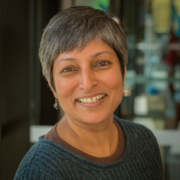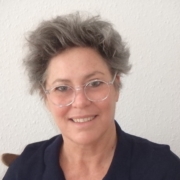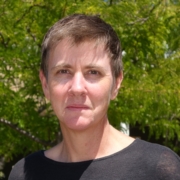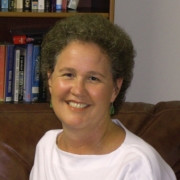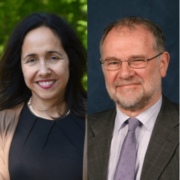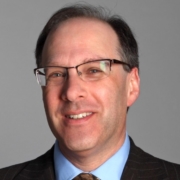Chris Morrissey
New Approaches to Teacher Education
Today we explore new approaches to teacher education in Australia. My guest is Chris Morrissey, a Clinical Associate Professor and Director of School Partnerships at the University of Canberra. Chris tells me about the school-based teacher education clinics that he helped develop across the Australian Capital Territory.
Chris was named the 2023 Australian Teacher Educator of the Year by the Australian Teacher Education Association. The Affiliated Schools Program that Chris leads has recently been renewed for another five years.
Citation: Morrissey, Chris, interview with Will Brehm, FreshEd, 333, podcast audio, October 16, 2023. https://freshedpodcast.com/morrissey/
Will Brehm 0:14
Chris Morrissey, welcome to FreshEd.
Chris Morrissey 1:06
Thanks, Will. Thanks for the opportunity.
Will Brehm 1:07
You are the first University of Canberra staff member that I’m interviewing, and we get to do it in person. So, thank you for being sort of the guinea pig on this. So, I want to jump right into initial teacher training. And so, in Australia, which is where we are, how does initial teacher education traditionally prepare teachers for the actual classroom, like getting ready to go into a school?
Chris Morrissey 1:28
So, I understand that it’s similar in other countries of the world that students in initial teacher education will commence to do practicums at the end of the teaching period from their first year. And in our case, they do an observation in their first year, and then over the next three or two years of their degree degree, they do incrementally longer practicums and higher expectations around those. And that’s linked to what they’ve theoretically learned in the classroom that is growing in their knowledge as well.
Will Brehm 2:00
Okay, and so these initial teacher trainers or teachers that are in their practicum, they wouldn’t be taking a class at the university at this time, they would just be working in a school. Do they sometimes have mentors at the school and an experienced teacher will be sort of helping them. And so in their classrooms, they’ll have another teacher sort of with them at all times, right?
Chris Morrissey 2:18
At all times. And that person has the duty of care, and the responsibilities to develop and support the pre-service teacher.
Will Brehm 2:18
And how long do practicums usually last?
Chris Morrissey 2:18
So, in our case, they go from two weeks or 10 days in the second year, two to three weeks and up to five or six weeks in the fourth year.
Will Brehm 2:37
Right. Okay. And then after that, they get a certificate to say they are eligible to teach in whatever state or territory?
Chris Morrissey 2:44
Correct. So, in Australia, for undergraduate students, they’re required to have a minimum of 80 days classroom experience, and for post grad students, 60 days.
Will Brehm 2:54
Okay. Now thinking about that traditional model, what are some of the problems and limitations that have been identified with such an approach to initial teacher education?
Chris Morrissey 3:04
So, it’s seen in the literature as being one of the biggest flaws in the model is the separation of theory and practice. So, it basically has the premise that students will learn something over there, in our case, 12 weeks of the semester, and then I’ll go into a practicum and now we’ll have an opportunity to practice that in that space. So, there’s a separation there. And it’s really interesting that even Dewey back in the 1900s identified that that was the biggest problem with education and the whole of the 20th century, it was a contested area, and nothing changed. And so it still came to the 21st century. And it’s only been sort of around the early 21st century, although there are a couple of models -one in the States, one in the UK now, though, we’re actually early the century- that did bring together the theory and practice.
Will Brehm 3:58
And so, with John Dewey didn’t they have some sort of experimental school or laboratory school where he was and they were trying to bridge that theory and practice. And so you are currently directing a program at the University of Canberra that is trying to sort of change that traditional approach to education, trying to bridge the theory and the practice. Can you tell me a little bit about what this program is?
Chris Morrissey 4:18
So, it’s called a clinical approach to initial teacher education. And the clinical approach brings together the theory and practice. And in our case, we operate what we call school-based clinics. And all of the methods units, you see, in both primary and secondary undergraduate and postgraduate are taught in schools in a school-based clinic.
Will Brehm 4:19
So, the initial teacher educators, the ones who are enrolled at the University of Canberra, when it’s time to do their quote, unquote, practicum they actually are doing it through a clinic at a school and a practicum. So, they’re still doing teaching in the school, but then the theory lessons, the lectures, the school-based content that they would have at the university are also taking place at the school.
Chris Morrissey 5:03
Yeah. So, I’m the social science teacher, I teach secondary social science. My students do two semesters of social science. And both of those are held in different school settings. And instead of attending university, those students attend the school.
Will Brehm 5:20
And so then the professors at University of Canberra travel to the schools as well. Nothing happens, in a sense, during that practicum at UC?
Chris Morrissey 5:29
So, in the practicum, we don’t go and visit our students. We don’t see them, they go off, we hand over to their mentors, we hand over a series of expectations and requirements that they have to sign off on. And then if there’s an issue, we support our students, but if not, it’s all handed over to the school teachers, mentors. And one of the issues in that is that the quality of mentoring is very variable. Even though we do training for mentors, there are some mentors who are very good and there’s others that are not.
Will Brehm 6:00
So, what would be a typical day like for a student of UC, who’s also going through this sort of clinical model?
Chris Morrissey 6:09
Okay, so there are four stages to that clinical model. The first stage is that within any methods class, the pre-service teachers are organized into teaching teams, generally around three students. So, they become their own sort of little learning community there. They need to prepare a lesson that is based on the school’s requirements. So, I’ll stick with the social science one. So, at the most recent one, we were teaching year 10, and we were teaching superannuation, and that was the topic for them that the schools gave to us. Our teachers prepare, they do this for six weeks, they prepare a lesson. That lesson goes to their tutor, or professor two to three days beforehand who reviews it and suggests some changes if possible or just says that this is great, let’s go with it. When we get into the school, we have an hour’s tutorial. So, we have a dedicated space, and we do an hour tutorial, and we will be picking up on things that are relevant to that school and the students. Then that teaching team goes off and teaches a small group of school students, maybe 10-12 school students, they are observed by the tutor and the teachers of those students. So, after an hour’s teaching, there is then the final hour, which is a reflection period, and the feedback from the teachers, the feedback from the tutor, the feedback from each other, and did you meet the lesson goals is then considered. And following that, you go into the preparation for the next lesson based on the outcomes of what was found.
Will Brehm 6:27
Right, so like this three hour sort of university class, the traditional three hour class, you just do it at a school. You used to do it on campus, now you do it in a classroom or in a school. You do a one hour prep with your tutors, you do the one hour sort of practicum, where you’re teaching a lesson in a school, and then you do a one hour reflection. And you can see how the blending of the theory and the practice happens within that three hour window. There’s no sort of separation and temporal break between any of those elements. And so you refer to this, I think it’s in the research literature called the “third space”. So, what exactly does that mean? And how do you see it in that sort of scenario that you just laid out for us.
Chris Morrissey 8:37
So, the creator of the third space in education is a guy called Zeichner who is American and Zeichner says, and I might even quote Zeichner because he’s right up there. He says that third space theory refers to a relationship between schools and universities, where the roles and responsibilities of pre-service teachers, school-based teachers and teacher educators are altered to create new learning opportunities. And that is the third space. So, there’s a recognition and a respect for school educators and university educators coming together in a learning community and our students coming together in a learning community. And that’s the first space. It’s in between, I guess, I’m not too sure, which is number one, the school, or the university -one and two- this is the third.
Will Brehm 9:25
Right. Was this part of the inspiration for creating such a clinical model here?
Chris Morrissey 9:29
Absolutely, yea. And we’ve got a history of clinical models going back to around 2010. So, it’s quite a while but it’s only with the initiation of the partnership that we transferred it to all learning areas because prior to that, it was science or health and PE.
Will Brehm 9:46
I think this partnership is really kind of crucial because it’s a partnership, as I understand it, between the University of Canberra and the Australian Capital Territory Education Directorate. And so, they’re the ones that manage the schools in this territory. And so they have basically given you the permission and the access funding as well. So, can you talk a little bit about how did that partnership come about? Because it seems to be so crucial to being able to do this type of model.
Chris Morrissey 10:13
So, this came about over a number of years of discussions. The Australian Government put a lot of effort into requiring partnerships between schools and universities. And they were looking -back in 2007, I think it was they had a report that said, we need to have a more systematic approach to placements basically, and the best way we can do that is to involve schools and uni’s together. And then by 2013, I think it was, we had what’s called a TMAG report, the education ministers action group or something like that. And they said that this has got to happen. Universities have gotta go ahead and form a partnership with a school, or certainly not with a system, but that’s how this one developed. And so they were putting that pressure on because the literature was saying that the most effective way of getting effective professional experience for students is that the school and the university work together. It’s that it’s a shared view.
Will Brehm 11:17
What was the hardest part trying to build this partnership? I mean, it sounds like it was built over time, it sounded like the ACT director at the university and the school’s all sort of shared a common goal of making placement work better for initial teacher training?
Chris Morrissey 11:33
Certainly that the university and the system did, and the schools already were providing really good professional experiences. And so that’s the group of schools that came together in the first instance. Those schools that have already demonstrated.
Will Brehm 11:49
So, I guess that does raise this question of which schools are involved? I would imagine in the ACT, there’s many schools.
Chris Morrissey 11:54
So, the director, at the moment, has about 95 schools, and 25 of them are in the partnership. So, can I just go back a bit. So, an attempt of a partnership was made earlier, let’s say we started working on this in 2018. And it took us a year to get it together. But in about 2015, or 2016, there was a partnership setup between a couple of other schools in the ACT, and the prime purpose of that was to teach the new masters teaching course unit. And that one wasn’t that successful because of resourcing and lack of drive, I think. Whereas when this one came up in 2018, that Dean at the time, was really keen and school partnerships was something that he studied for some time, and the education directorate had an appetite for it as well. And they were sort of being directed by the government to form something. And so, in most cases, a partnership can be one university and one school or one university, and a teacher in a school but there was this sort of big picture to make this a big thing and to make it work and have multiple elements. Both parties, both sides -the leaders in the director at the time, and those of us at uni- had this vision. And as I said, it took us 12 months to develop the vision and get it ready to launch. But there was great support for it and the ACT government came through with the funding.
Will Brehm 13:26
It’s an interesting study into educational change. And it doesn’t just take an idea that’s been written in an article and saying, Wow, this is the right way to do it. There needs to be political will basically from all the different parties involved. And it sounds like it coalesced. There were a couple of fits and starts in the beginning and then it sort of coalesced in a 2013, 2014, 2015 sort of moment.
Chris Morrissey 13:46
And to recognize the literature though, we did a lot of research around successful partnerships and looked at models in the UK, and in the US, and in Europe to see what the characteristics were of successful partnerships and we incorporated them. We set up a group of principles at the start. There was going to be a co-creation, there was going to be reciprocity within itself, benefits for both of us, what are the benefits, how do we recognize those, and it’s collaborative and cooperative.
Will Brehm 14:17
So, besides these school clinics, does this partnership entail any other sort of activities?
Chris Morrissey 14:24
As I mentioned before, most partnerships only have one. So, this one has six, which is large enough to do that. So, we have professional learning for teachers, and there are two elements of that. There is what we call teachers as researchers. So, that’s where university staff act as critical friends for a school that identifies an action research project that they’re keen on and works with them over a period of nine months. And the other part of the professional learning for schoolteachers is masterclasses and mentoring workshops. The other element is Work Integrated Learning for preservice teachers. So, that involves schools hosting the practicums for preservice teachers. And the third element is the research part of it, or in our research, I think we call it community-engaged scholarship. That was the term where the co-creation of a project was between the school and the university. And as you’re aware now, that relies on schools to work in the formation of that project. So, that’s the other element of it. So, the six things come together. In that research area we also put in [our teachers] as researchers because that’s both research development for teachers, and also working professionals.
Will Brehm 15:48
It’s quite amazing because that idea of the third space, it’s sort of almost every single element of this partnership has third space characteristics, where it’s being co-created, not only by the different actors involved in this partnership, and different stakeholders, but sort of blending what is traditionally done in the university with what is traditionally done at a school and sort of blending them together to create these kind of new spaces in a way, the third space,
Chris Morrissey 16:12
It is and if I’m working in a school with the teachers, and I’m working with the coordinators, we are talking the same language. There’s not the cultural difference that is seen a lot between the universities and schools. Our faculty staff, and there’s about 15 or 16 involved in a semester, in clinics, they are in schools every semester for a period of six weeks, they are seeing schools in action, their knowledge is contemporary of how a school works, rather than the idea of the academic who’s distant to a school.
Will Brehm 16:49
The ivory tower, you’re sort of sitting above all the stuff that’s happened. But that’s quite amazing. So, if the academic semester here is 12 weeks, you’re saying that half of that is spent inside schools. So, in a way, the third space for an academic like yourself is totally different because you actually are spending a huge amount of time not at the University of Canberra, you’re actually inside the schools. Are you just traveling around to all these different schools working and you must have like hundreds of colleagues.
Chris Morrissey 16:49
So, we work in different schools. So, this semester, for example, I’ve worked in two schools -two high schools, actually, and both large schools and with a different set of teachers and a different set of students. So, that sets my experience for somebody else. Maybe somebody doing one of the primary ones, they might have, let’s say the science person, they might have four clinics, and they are in four different schools over the week and that’s their classes.
Will Brehm 17:43
It’s quite an incredible sort of reimagination of teacher education. Do we know anything about the effectiveness of this program? You said it sort of started in 2018 and really got going in 2019. It’s been a few years now. I think it’s been just renewed for another five year term. So, what do we know about the outcomes of what’s being produced through these sorts of school clinics?
Chris Morrissey 18:04
Yeah, so our own research on it, is we do an evaluation every semester. So, we’ve got a lot of data from now. We’re just doing the finishing off the data collection on our tenth semester. And what we find is, we identify elements of classroom readiness, or school readiness, and we ask the students to rank how they feel they developed in that area. And the results are outstanding every single time and they’re consistent that something like 90% plus of students would say that my lesson planning has improved as a result of participation. My classroom management has improved, my differentiation strategies have improved. So, that’s showing us that. And then the literature would say that pre-service teachers they experienced an unequal model, have a greater level of classroom readiness. So, that’s the outcome there. And there’s some good literature around that. Linda Darling-Hammond, who is the guru, she’s got a word, she calls it the “Holy Grail”. So, the clinical model is the holy grail of professional development experience for pre-service teachers.
Will Brehm 19:21
And are there any ongoing studies to sort of compare and contrast what’s happening with the traditional initial teacher education, the practicum -because obviously, that’s still happening in the ACT- with what’s happening with the school clinics in the affiliated school program?
Chris Morrissey 19:39
So, our understanding our teachers sees their students teaching in context. So, they know where their teaching strengths are and where their challenges are. In the practicum model we’ve got no idea. We get a report at the end from somebody else about that. So, we believe that our teachers have got a better idea of how they’re tracking and can respond to that, than the practicum model. That’s one of the things that we see as the advantage. And for example, if a student is having difficulty in the practicum, as a call for support, the first person I would speak to would be their methods teacher to say, can you tell me about this? And they might say, Well, they did struggle a little bit with classroom management or something like that and I suggested this week to support them in this way. So, we’ve got that opportunity. But the practicum, I’ve just discovered one other university in Australia that is doing something similar, but it’s with one school, and it is with a different model. It’s a similar model, it’s three hours a week that they do different things in there. And the scale of it compared to this is really small.
Will Brehm 20:53
It’s more like that John Dewey approach where there was a single school where they sort of experimented and tried to reimagine what teacher education looked like. Whereas this is across 25 schools or something.
Chris Morrissey 21:03
Yeah, the scale of ours is that each semester, we have 25. We had 27 clinics this semester across, that would be I think it was something like 30 schools, primary and high schools. There’s 650 of our students involved, or about half of them, there’s 25 school communities, there’s about 80 school teachers, and there’s about 2,000 school students. It’s huge. Yea, the scale of it is so different to any other precedent.
Will Brehm 21:35
You were saying 650 university students are in this school clinics each semester. Does the University of Canberra offer that sort of traditional practicum based teacher training anymore? Or is it only school-based?
Chris Morrissey 21:48
So, at the end of every semester they do a practice because these would not contribute enough days to the requirements.
Will Brehm 21:55
Right. So, the school clinics happen before the practicum then. Sort of big preparation for that, right. Okay, that makes sense. Okay, so it’s not necessarily replacing the traditional approach. It’s sort of being scaffold and supplementing onto it. And so one of the things I’ve learned, I’m new to the ACT, and I’ve been learning about the school system and the directorate itself and it seems historically like the ACT directorate has been a real site of innovation because of the way it was sort of created 50 years ago, almost out of the blue, and given authority over at schools. Before that it was subsumed by New South Wales. And so everyone that you talk to from Pasi Sahlberg, who’s studying Australian education across the country. But even if you talk to just someone who used to teach in the ACT, they’ll tell you how innovative and the directorate itself tries new things all the time, from the college system to joint libraries, you name it. The affiliated school program that you’ve been working on, is this sort of another chapter of the ACT’s innovation that they’ve had over time, do you think?
Chris Morrissey 23:02
Yeah. I believe so because there was the will of the people in the directorate at the time, five years ago, to make it happen. And because of their capacity, the ACT government has been one of our greatest supporters. They have got the political support as you’ve mentioned before, they’ve got the political support to do it. The minister is a regular visitor to any of these activities. She loves being there. She just supports it wholeheartedly. So, it’s not only the education director, I think it’s the ACT itself that generates that sort of innovation.
Will Brehm 23:37
Is there a risk that if the politicians change, new ones get elected, that there could be a risk to the program itself?
Chris Morrissey 23:44
Apparently not. So, it’s not a political decision each year. The funding is already there year-by-year. And we just had a renewal. We were fearful of that initially but they just assured us to say that no it’s on.
Will Brehm 23:58
Okay, excellent. So, obviously, it’s providing some value to the directorate itself. It’s not just value to UC or the schools themselves?
Chris Morrissey 24:05
The core understanding in the infographic that we set up initially was to improve student learning outcomes within schools. And so everything that we’re doing has that ultimate goal. So, whatever we’re doing the clinics are providing teachers in ACT Education Directorate (ED) schools with the opportunity to see young pre-service teachers in action and to sharpen their teaching strategies and approaches to that. Practicums do the same with the professional learning that we offer. The other thing I didn’t mention, one of the professional learning courses is there’s a master’s of education intensive with scholarships provided by the Education Directorate. And over the last four years, there will be hundreds of ACT teachers who have got a master’s, so they are taking that learning into their schools as well.
Will Brehm 24:57
It’s really quite incredible when you think about it. I listen to Radio National on my trip to university every day. And a narrative is quite -you know, one of the things they report on often is sort of the teacher supply crisis in Australia and they often connect it to COVID and how a lot of teachers sort of left the profession at this point because of all the extra stress that was added. And it just made me wonder, do we know anything about the affiliated school program and these school clinics with sort of preparing teachers that then stay to be teachers -like the retention of teachers? Do we know if this affiliated school program is sort of helping solve this supposed teacher supply crisis that I hear about on Radio National all the time?
Chris Morrissey 25:38
Yeah. So, what we know is that we are hearing anecdotally that our teachers are very well prepared for teaching at the moment. So, we can’t produce enough teachers for the supply that’s required. We just don’t have that. We are producing teachers who, because of their readiness, are more likely to stay within the teaching profession. So, we can offer that. We know also that during COVID, we did our clinics, we went online, and the schools allowed that to happen for us. During COVID, the ACT education directorate allowed our placements to continue in other states that didn’t occur. And so our placements became either remote working with the schools to do that. And then as soon as the schools opened up, we knew that the schools were ready to take the clinics again so that they really welcomed them back because they value them and the school communities value them greatly as well. I’ll just get back to a question you asked about selection, or that. So, basically, with the selection, we wanted to acknowledge the diversity of the ACT. And so part of the selection is there are early childhood schools, primary schools, secondary schools, and colleges, and they’re spread right throughout the ACT. That’s the university. So, we’re just getting around to selecting the new ones. And we’ll apply the same to that. So, socioeconomic diversity, educational diversity, and geographical.
Will Brehm 27:16
Right. Okay. And so these schools apply to be part of this program.
Chris Morrissey 27:19
Not round one, but round two.
Will Brehm 27:21
Round two they did, right. And is there any goal to expand this program to reach more schools? Or is there a capacity issue?
Chris Morrissey 27:28
Yes, there is a capacity issue. We’re stretched, we’re only a small faculty. At the moment, we’re doing something like I think 12 teachers as researchers projects this year. So, that’s 12 of our staff who are acting as critical friends. The directorate wants us to take that to 16 or 17 from next year. So, that’s a challenge to us. We’ve sort of said, we’ll try and do it, if we can. We might have to come up with some other models of doing it but they really like the program, so they want us to expand.
Will Brehm 28:00
Okay, so there’s some tension there, where the government is saying, we want more and more and more but the university saying we don’t have enough staff. I mean, I keep sitting here thinking this program is just a goldmine for researchers to unpack what’s going on. From the real sort of random controlled trials sort of effectiveness research down to how it actually affects teacher retention in the long term, and on students and on teaching quality. I mean, there’s so many angles that you could sort of approach this massive project. But the other thing I wonder about is; this teaching crisis in Australia is seen countrywide/nationwide, it’s not just an ACT specific thing. And so, it makes me wonder, is this model that you’ve been sort of pioneering and spearheading and developing and refining over the last few years; Is this something that you think could actually be in a sense copied or borrowed and sort of used in other states and territories in the country?
Chris Morrissey 28:55
We believe it is transferable. And I wonder, why aren’t others doing it? And in the last two years, I think I presented at maybe four conferences and afterwards, people come up and say, I wish we could do something like that. But I think you’d have to have the will and you’d have to be convinced that it’s gonna work as well. And there’s costs for the university to do that but in our case, our faculty sees the benefits of it, and is prepared to pay that cost. Look at New South Wales. I know of a partnership between the university and about four or five schools, but it’s just got a practicum base. So, it’s basically finding spots for researchers, teachers for placements, for practicums and providing an opportunity for schools to see who’s on the market and give them first dibs at students who are coming through. The purpose of that is practicum-based. And we’ve got another partnership ourselves with NSW which is also based on that.
Will Brehm 30:04
Chris Morrissey, thank you so much for joining FreshEd. There’s so much more to unpack with this program. And so hopefully you can come back on once we know more about how this program impacts and all these different facets. So, thanks so much for joining.
Chris Morrissey 30:17
Thanks, Will.
Want to help translate this show? Please contact info@freshedpodcast.com
Related Author Publications/Projects
An evaluation study of the affiliated schools program
Mentor teacher participation in professional experience
Mentioned Resources
The Dewey school: The laboratory school of the University of Chicago
The University of Canberra Affiliated Schools program
The future of education: An ACT education strategy
Australian National Teacher Workforce Action Plan
Recommended Resources
Teacher education in Australia: Programming, practicum and partnership
Best practice teacher education programs and Australia’s own programs
The politics of teacher education policy in Australia
Quality initial teacher education review
Developing better practice for primary teachers: significance of the practicum
Practice before practicum: Simulation in initial teacher education
Australian teacher education policy in action: The case of pre-service internships
The rural practicum: Preparing a quality teacher workforce for rural and regional Australia
Immersion programs: Exploring four models for developing classroom-ready teachers
A study of teacher training in the US and Europe
Clinical practice approaches in initial teacher education in Australia
International insights on evaluating teacher education programs
The Australian context: National, state and school-level efforts to improve schools
Have any useful resources related to this show? Please send them to info@freshedpodcast.com

